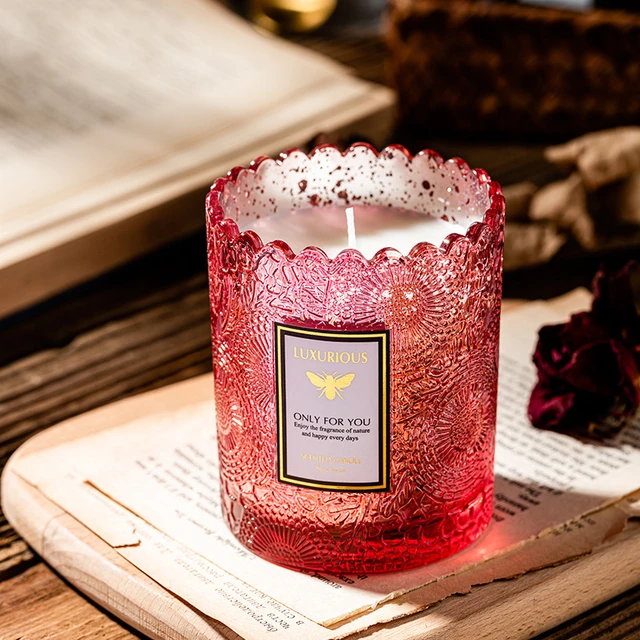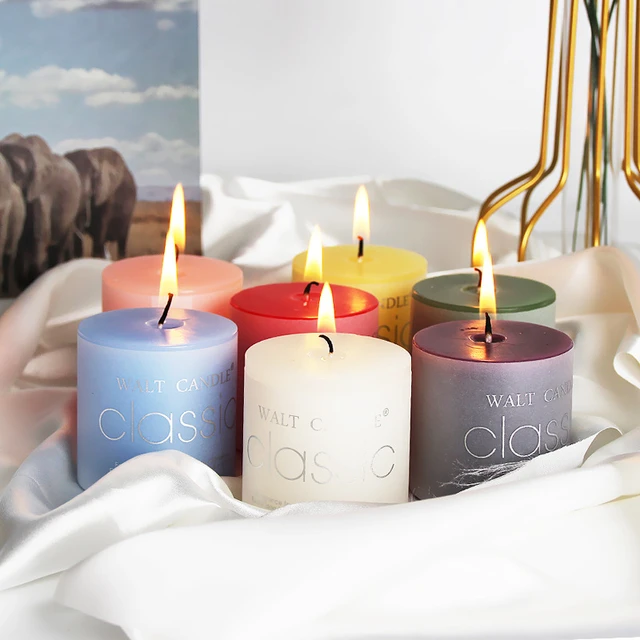 Introduction:
Introduction:
Candle wicks are an essential component of candles, responsible for providing a steady flame and facilitating the efficient burning of wax. It is crucial to understand the materials used in candle wicks to choose the right type for your candle-making projects. In this comprehensive guide, we will explain what candle wicks are made of and explore the different materials commonly used. By gaining this knowledge, you can make informed decisions when selecting wicks for your candle creations.
Introduction to Candle Wicks and Their Importance
Candle wicks play a vital role in the burning process of candles, ensuring a steady flame and proper wax consumption.
A. Functionality of Wicks: Wicks are responsible for drawing the liquid wax up to the flame, providing fuel for combustion.
B. Impact on Candle Performance: The type and quality of wicks used can directly affect burn time, flame size, and overall candle performance.
 Cotton Wicks
Cotton Wicks
Cotton wicks are a popular choice due to their affordability and versatility.
A. Natural and Sustainable: Cotton wicks are typically made from 100% cotton fibers, making them a natural and renewable resource.
B. Efficiency and Consistency: Cotton wicks provide a consistent burn and are suitable for a wide range of candle types and sizes.
Zinc-Core Wicks
Zinc-core wicks are designed for use in container candles, offering enhanced stability and rigidity.
A. Structure and Composition: Zinc-core wicks consist of a cotton or cotton-paper blend surrounding a thin zinc core.
B. Rigidity and Stability: The zinc core provides increased stiffness, preventing the wick from sagging or falling over during burning.
 Wood Wicks
Wood Wicks
Wood wicks provide a unique and visually appealing flame, adding extra charm to candles.
A. Natural Aesthetic: Wood wicks are constructed from thin strips of wood, offering a rustic and cozy appearance when burned.
B. Cracking and Popping: The burning of wood wicks often results in a crackling sound reminiscent of a fireplace.
Paper-Core Wicks
Paper-core wicks combine the benefits of both cotton and metal-core wicks, resulting in a versatile option.
A. Combination Construction: Paper-core wicks consist of a cotton exterior wrapped around a small paper tube or spiral.
B. Enhanced Burn Stability: The paper core provides added stability during burning, similar to metal-core wicks.
Choosing the Right Wick for Your Candle
Selecting the appropriate wick for your candle requires considering various factors.
A. Candle Type and Size: Different candle types, sizes, and compositions may require specific wick characteristics to ensure optimal burn quality.
B. Wick Size and Thickness: The size and thickness of the wick should match the diameter and composition of the candle for proper fuel absorption and flame size.
 Some guidelines:
Some guidelines:
The pairing of candle wicks and candle jars is an important consideration for successful candle making. Here are some guidelines:
Wick Size:
The size of the wick should be chosen based on the diameter of the candle jar. A too small or too large wick can affect the performance of the candle. Generally, wick size recommendations are available from wick manufacturers or candle-making suppliers based on the jar’s diameter.
Wick Type:
There are different types of wicks available, including cotton, coreless, wooden, and zinc core wicks. The choice of wick type depends on factors such as the desired burn time, fragrance load, and diameter of the jar. Cotton wicks are commonly used for many candle applications, while coreless or wooden wicks are popular for specialty or decorative candles.
Candle Jar Material:
Consider the material of the candle jar when selecting the wick. Glass and ceramic jars are generally suitable for various wick types. However, certain materials like metal or highly flammable containers may require specific wick choices or additional safety considerations.
Testing:
Before producing candles in large quantities, it’s essential to conduct testing to ensure the chosen wick is suitable for the specific combination of wick and jar. Test burn candles in different sizes, fragrance loads, and jar materials to evaluate their performance, such as flame height, burn rate, and even wax pool formation.
Adjustments:
If you find that the candle does not burn properly, such as tunneling (uneven wax melt), excessive smoking, or mushrooming (carbon buildup), you may need to make adjustments. This could involve choosing a different wick size, switching to a different wick type, or introducing additives like stearic acid to modify burn characteristics.
Always refer to wick manufacturer guidelines or consult with experienced candle makers for specific recommendations based on the candle’s intended use, jar size, and wax type. It may require some experimentation and adjustment to achieve the desired burn performance with the chosen wick and candle jar combination.
Essential oils can enhance the experience of burning candles in several ways:
Aromatic Fragrance:
Essential oils have distinct and pleasing natural fragrances. When added to candle wax, they infuse the air with delightful scents as the candle burns. The aroma can create a desired atmosphere, promote relaxation, or evoke a specific mood or feeling.
Customization:
By adding essential oils to the candle wax, you can customize the scent of your candles to suit personal preferences or specific occasions. Different essential oils, or combinations thereof, can create a wide range of scents, from floral and fruity to woody or herbal, allowing for versatile and unique candle creations.
Aromatherapy Benefits:
Many essential oils have therapeutic properties that can positively impact mood, relaxation, and overall well-being. For example, lavender essential oil is known for its calming properties, while citrus oils are invigorating. When released through the candle’s fragrance, these beneficial properties can enhance the ambiance or support specific aromatherapeutic intentions.
Natural and Non-Toxic Option:
Essential oils are derived from natural sources, such as plants, flowers, or spices. They can be a safer alternative to synthetic fragrance oils, as they lack potentially harmful or irritating chemicals found in some commercial scents.
Scented Candle Varieties:
By using essential oils, candle makers can offer scented candle variations beyond traditional fragrance options. This can attract customers seeking natural, eco-friendly, or niche scents that may not be readily available in mass-produced candles.
It is important to note that the compatibility of essential oils with specific candle waxes should be considered. Some essential oils may not mix well with certain types of wax and could affect the candle’s burn performance or scent throw. It is recommended to conduct small-scale testing and research candle-making resources for appropriate essential oil usage rates and safety guidelines when incorporating them into candles.
Using candle wicks;
When using candle wicks, it is important to keep the following considerations in mind:
Wick Size:
Choosing the appropriate wick size is crucial to ensure the candle burns properly. A wick that is too small may lead to a weak flame or tunneling, while a wick that is too large can result in excessive smoking or a large flame. Refer to wick manufacturer guidelines or conduct small-scale testing to determine the correct wick size for the diameter of your candle.
Wick Type:
Different types of wicks (e.g., cotton, coreless, wooden) offer varying burn characteristics. Consider factors such as the desired burn time, fragrance load, and candle shape when selecting the appropriate wick type. Each type has its own performance characteristics; for example, wooden wicks create a crackling sound while burning, ideal for creating a cozy ambiance.
Trim the Wick:
Before lighting the candle, it is essential to trim the wick to approximately ¼ inch (6 mm) in length. This helps promote an even and controlled burn, reduces smoking, and prevents excessive flickering. Trim the wick between burn sessions as well.
Wick Placement:
Proper wick placement is important for an even burn. Center the wick in the candle container and ensure it is suspended straight. You can use wick tabs or other devices to secure the wick in place during the pouring process.
Safety Precautions:
Always follow safety precautions while working with candle wicks. Keep flammable materials away from the flame, ensure the candle is situated on a heat-resistant surface, and never leave a burning candle unattended. It is also advisable to use a candle snuffer or a gentle blow to extinguish the flame rather than blowing it out forcefully.
Testing:
Each candle and wick combination may require testing to achieve optimal performance. Burn small-scale test candles to assess factors like flame height, burn rate, wax pool formation, and scent throw. This helps troubleshoot any issues and ensures a safe and enjoyable burning experience.
Remember to refer to reliable candle-making resources, consult experienced candle makers, or reach out to the wick manufacturer for specific guidelines and recommendations based on your candle-making materials and desired results.
Conclusion
Candle wicks are integral components of candles, responsible for producing a steady flame and facilitating the efficient burning of wax. Understanding the various materials used in candle wicks, such as cotton, zinc, wood, and paper, allows you to make informed decisions when selecting wicks for your candle-making projects. Each wick material offers unique characteristics and advantages, catering to different candle types, sizes, and aesthetics. By considering these factors and matching the wick to your specific candle requirements, you can enhance the burn quality and overall performance of your candles.




